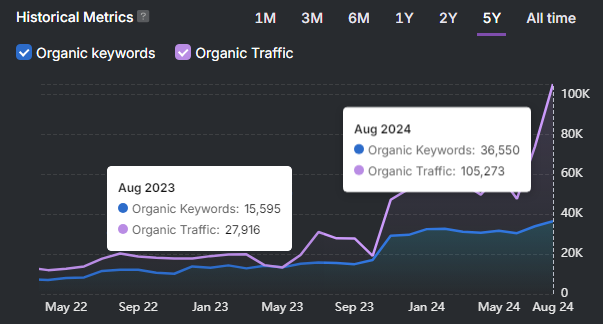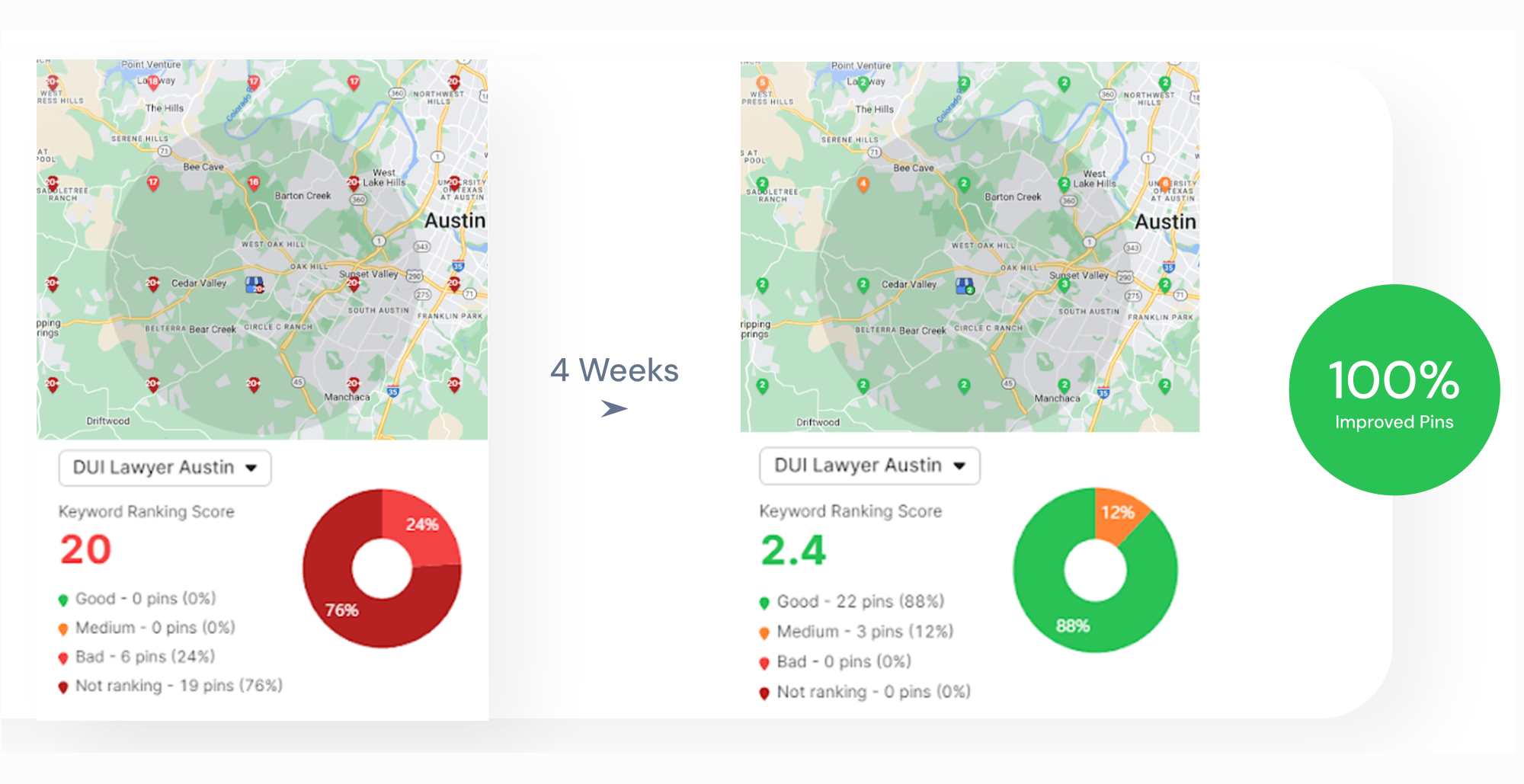You’ve followed every SEO best practice, yet your traffic is declining. What’s going wrong? Over-optimization could be the issue, turning your efforts into rank penalties. 🚨
Stuffing keywords, overloading links, or creating content just for rankings might seem like a smart move for ranking, but it can actually push your site down in search results.
Why should you be alarmed about that? 🤔
As algorithms become sharper and users expect more valuable content, finding the right balance between smart SEO and over-optimization is more critical than ever.
Search engines favor content that’s useful for real people, not just tailored for algorithms. The best approach is to optimize content to make it feel natural and enhance user experience.
Read on to learn how to spot over-optimization, fix common mistakes, and keep your strategy running smoothly without risking penalties.
What Is Over-Optimization?
Over-optimization occurs when a website pushes SEO tactics beyond their natural limits, causing content to feel forced, unnatural, or spammy.
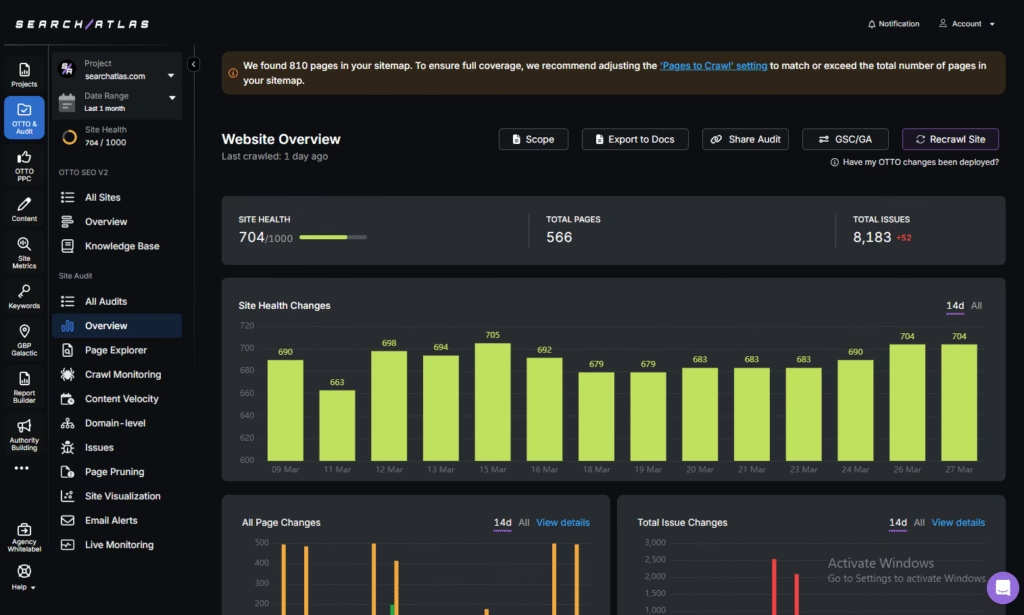
While elements like keywords and backlinks are important in an SEO strategy, overusing them can have the opposite effect.
Search engines use advanced algorithms that are highly effective at detecting unnatural patterns. When these patterns are identified, your site may face numerous penalties.
Why Over-Optimization Hurts Your SEO Strategy
Search engines continuously refine their algorithms to prioritize content that provides real value rather than overdoing content designed to manipulate rankings.
To understand the risks, let’s explore the key reasons why over-optimization can harm your SEO strategy:
- Google Penalties: Google’s algorithm updates target spammy tactics, risking ranking drops or site removal. Recovering from that can be a long and difficult process.
- Loss of User Trust: Visitors quickly leave, engagement drops, and conversions suffer when content feels manipulative.
- Damage to Brand Reputation: When a site prioritizes rankings over value, it appears untrustworthy. This harms long-term credibility and weakens the brand’s authority.
- Poor SEO User Experience (UX): Excessive keyword use, awkward phrasing, and repetitive structures disrupt the flow of content, making it difficult and frustrating to read.
- Negative Engagement Signals: Lower time on page, decreased click-through rates, and fewer return visits are common consequences, signaling to search engines that the content isn’t valuable.
What are the Top Over-Optimization Mistakes That Lower Rankings?
Many websites unknowingly fall into patterns that trigger search engine penalties. Below are some of the most damaging over-optimization mistakes:
- Optimizing for Unrelated Keywords: Targeting keywords that don’t align with the content misleads both search engines and users, leading to high bounce rates.
- Over-Concentrated Internal Linking to High-Level Pages: Linking primarily to homepages or category pages instead of distributing links across deeper content can limit SEO effectiveness.
- Keyword Stuffing: The excessive use of keywords or links is an outdated tactic that clutters the page and worsens user experience.
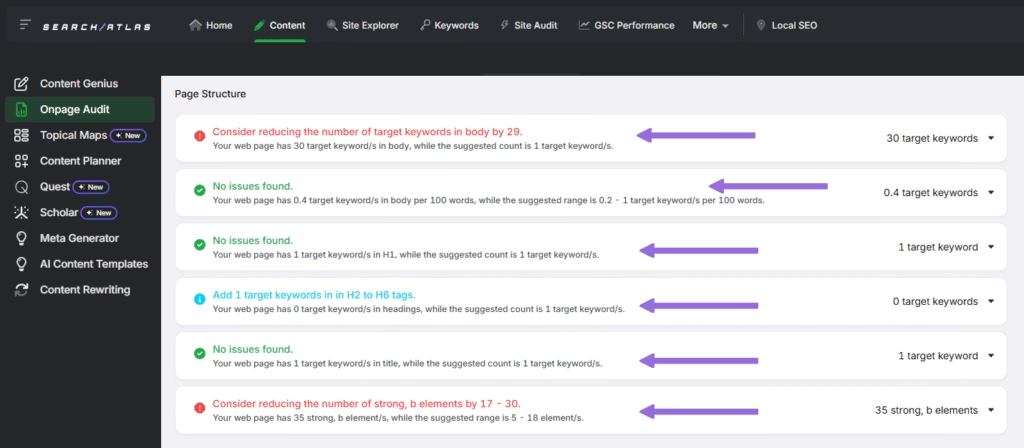
- Publishing Low-Quality or Thin Content: Pages that lack substance or originality provide little SEO value and struggle to rank.
- Manipulative Link-Building Strategies: Acquiring backlinks through excessive link exchanges or paid placements creates an unnatural link profile.
- Duplicating Content Across Pages: Copying content across multiple pages dilutes SEO value, making it harder for search engines to determine the most relevant version.

6 Best Practices to Avoid Over-Optimization
You might know the usual over-optimization mistakes now, but are you sure that’s enough to keep you safe? To find the balance between effective SEO and going too far, check out these best practices.
1. Enhance User Experience to Reduce Bounce Rates
While bounce rate itself isn’t a direct ranking factor, how users interact with your site significantly impacts your search visibility. To create a user-friendly website, focus on improving technical SEO and usability.
Start by ensuring a strong foundation with these key optimizations:
- Site Speed Optimization: Compress images, minimize scripts, and enable caching to prevent slow load times.
- Mobile-First Performance: Ensure your site adapts seamlessly to all screen sizes, avoiding disruptive elements.
- Indexability and Site Structure: Use clean internal linking, fix broken links, and monitor crawl errors to help search engines navigate your site effectively.
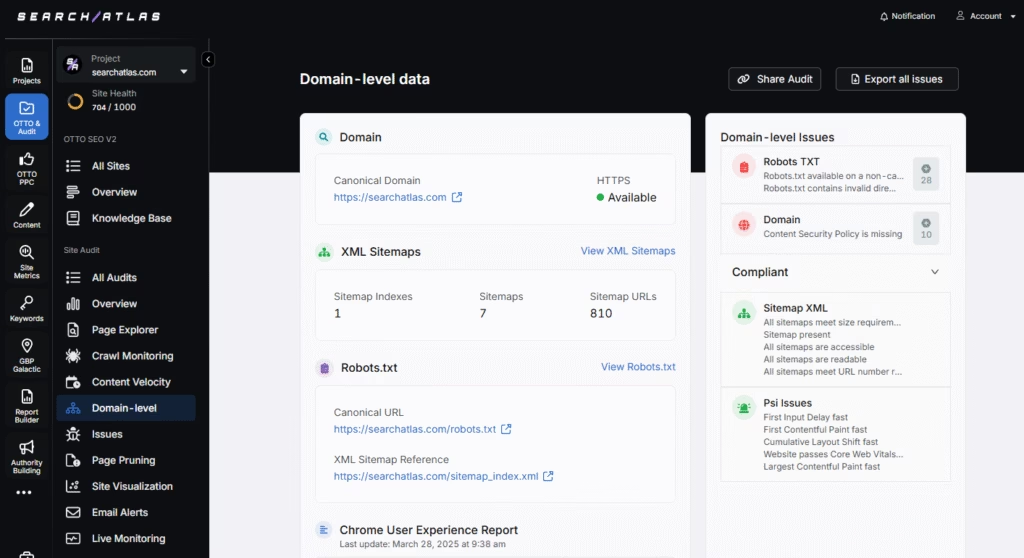
Beyond these technical factors, a seamless experience with content is key to keeping users engaged. Prioritize these optimizations:
- Content Readability and Layout: Use clear headings, short paragraphs, and logical formatting. A clean, scannable design makes content easier to consume.
- Navigation and Accessibility: Simple menus, clear buttons, and assistive features (like alt text and keyboard navigation) ensure a seamless experience for all users.
- Engagement and Interaction: Avoid cluttered pages, intrusive pop-ups, or excessive ads that disrupt the user journey. A well-structured site encourages users to stay longer.
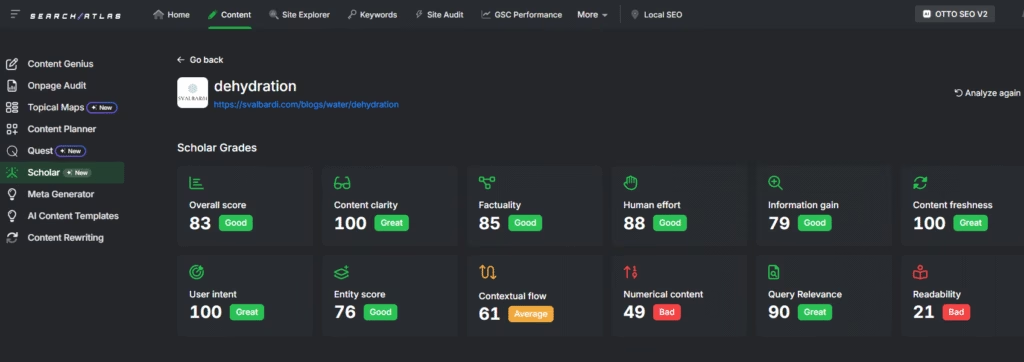
2. Smart Keyword Research to Boost Visibility
Before creating content, conducting thorough keyword research is essential to ensure your topics align with user intent and your niche. Search intent generally falls into four categories:
- Informational: Users are looking for knowledge about a topic.
- Navigational: Users want to find a specific website or page.
- Commercial: Users are researching products or services before deciding.
- Transactional: Users are ready to make a purchase or take action.
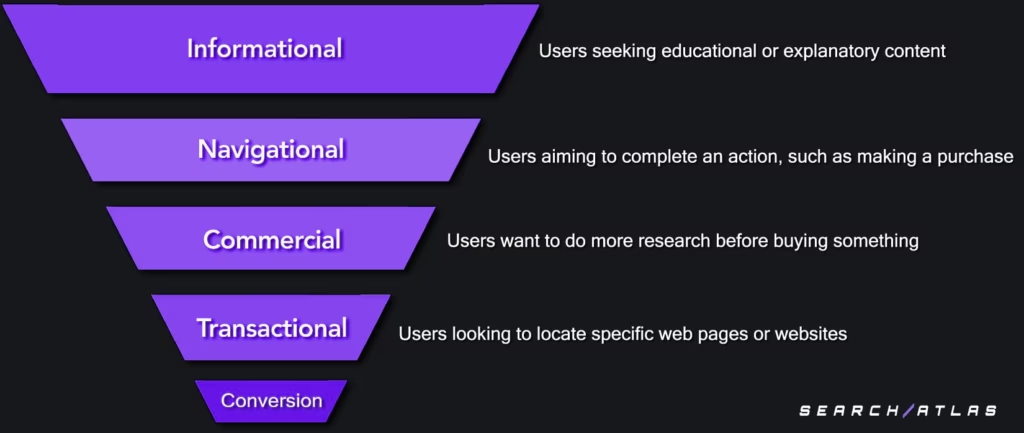
Use Keyword Research tools to streamline this process and go further, uncovering search volume, competition levels, and emerging trends, allowing you to refine your content strategy effectively.
Long-tail keywords
Since long-tail keywords often come with less competition and higher engagement rates, incorporating them into your content strategy can improve both discoverability and conversion potential.
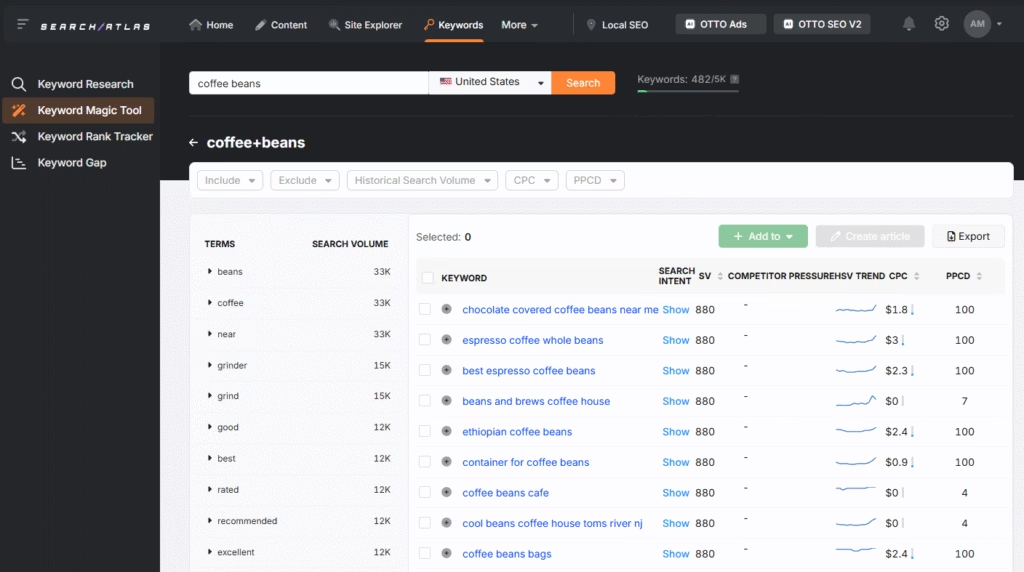
To keep your content optimized without overloading it with keywords, consider long-tail alternatives like this example:
- Instead of “SEO strategies,” use “how to optimize content without keyword stuffing.”
- Instead of “keyword research tools,” opt for “how to find long-tail keywords for better rankings.”
Your content remains reader-friendly while improving discoverability and engagement by naturally incorporating long-tail keywords and avoiding over-optimization.
3. Refine Meta Tags to Improve Click-Through Rates
Doing every meta tag optimization across your site can be inefficient, especially for pages that naturally receive little to no organic traffic. Instead, it’s better to focus on:
- High-Performing Pages: Prioritize meta tag optimization for pages already attracting organic traffic to improve click-through rates (CTR).
- Pages with Ranking Potential: Optimize meta tags for content that ranks on page 2 or 3 of search results, as small improvements could push them higher.
- Key Landing Pages: Ensure that essential product, service, or blog pages have compelling and well-optimized meta tags.
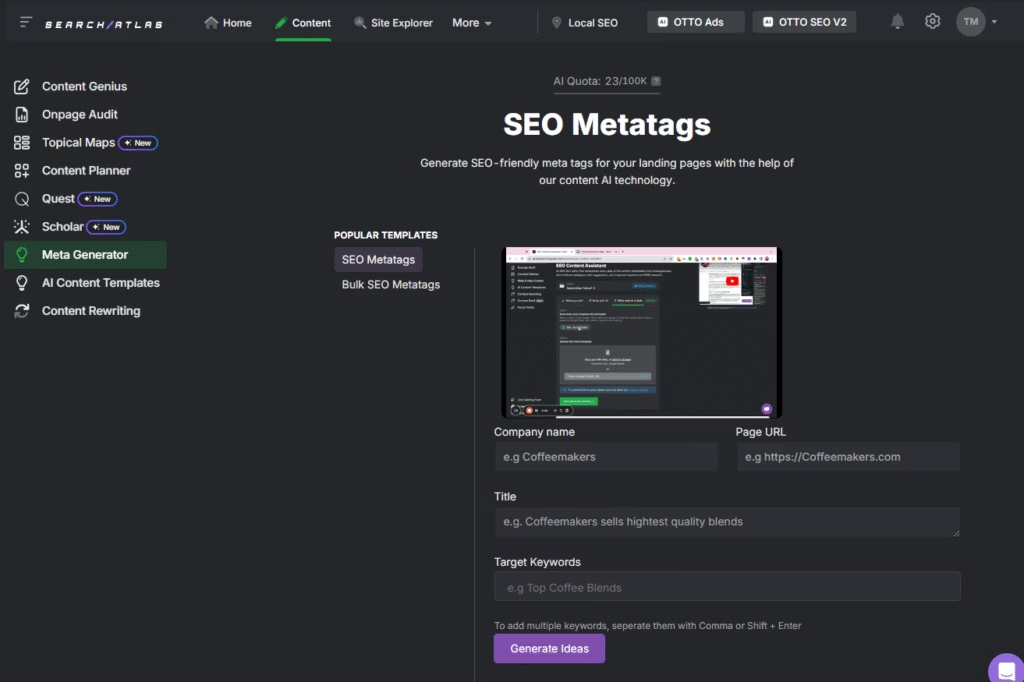
A quick analysis of top-ranking pages in competitive industries often reveals this keyword placement strategy as a common practice.
To maximize effectiveness, follow these best practices for meta tag optimization:
- Keep title tags under 60 characters: Search engines may cut off longer titles, typically around 600 pixels in width.
- Optimize for mobile readability: Given limited screen space, concise and well-structured title tags and meta descriptions improve visibility on mobile devices.
- Place primary keywords at the beginning: While clarity and engagement are key, positioning keywords near the start of the title tag can enhance search ranking weight.
For a more efficient process, use a meta tag generator to craft optimized titles and descriptions that balance keyword relevance with compelling messaging.
Before finalizing changes, preview how your snippets appear across different devices to ensure key details aren’t cut off.
4. Build Effective Links to Strengthen Authority
An effective link-building strategy enhances search engine visibility and authority by earning high-quality backlinks from relevant websites. The core principle is to create valuable, shareable content:
- Create High-Quality, Shareable Content: Develop informative and engaging content that other websites naturally want to link to. Content that provides unique value is more likely to attract organic backlinks.
- Conduct Targeted Outreach: Identify related pages and potential link-building opportunities. Targeted outreach ensures your efforts are focused on websites that align with your niche.
- Enhance Existing Content: Analyze your current content to determine whether new assets should be developed to attract more links. Use link building tools to identify gaps and opportunities to improve your backlink profile.
To maximize your link-building efforts, consider creating the following types of content, which are particularly effective at attracting backlinks:
- Research Reports: Original studies offering unique insights and fresh data.
- Data-Driven Case Studies: Real-world examples that demonstrate the effectiveness of a product or service.
- Evergreen Content: Articles that remain relevant over time, consistently driving traffic.
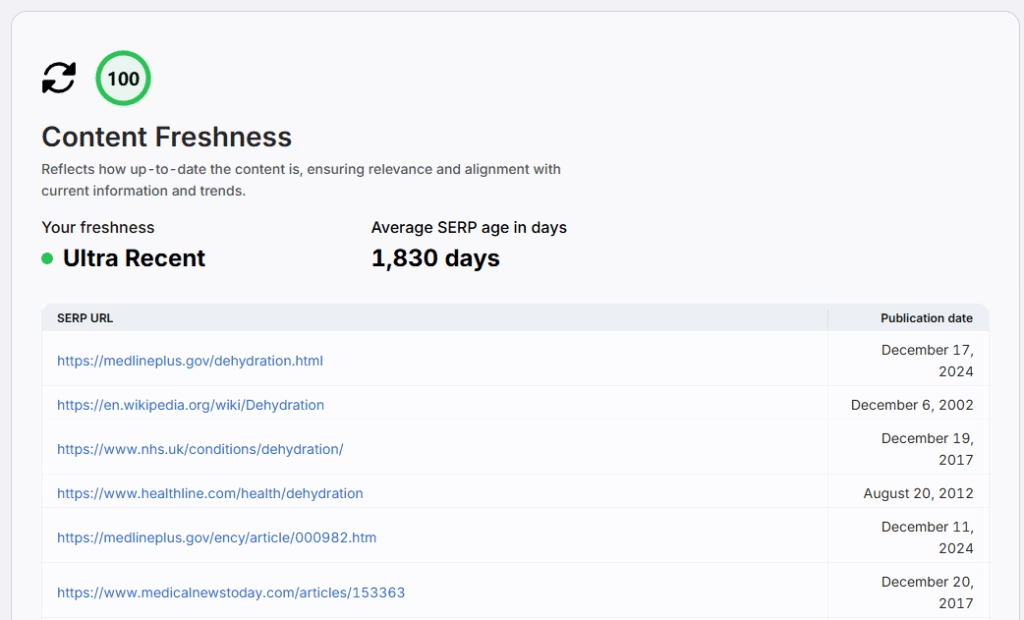
For external link-building, prioritize acquiring backlinks from authoritative, credible websites that are relevant to your content. Here are two proven strategies to gain organic backlinks:
- Broken Link Building: Identify broken links on other websites and offer your content as a replacement, providing value to the site owner while earning a backlink.
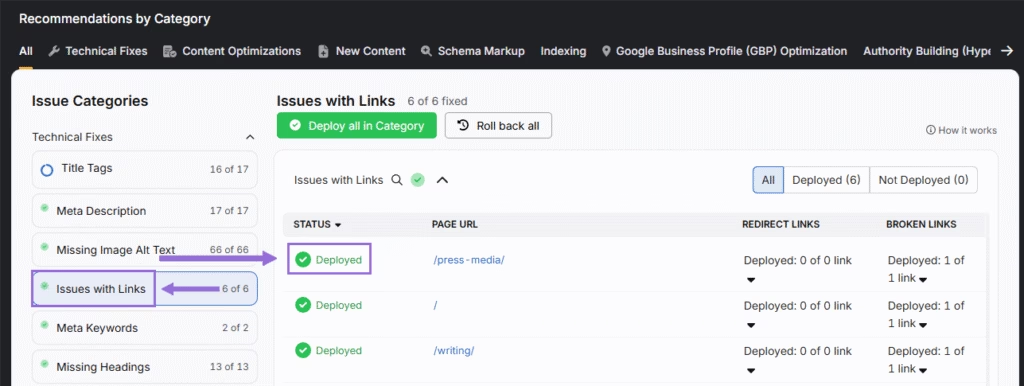
- Unlinked Brand Mentions: Search for instances where your brand is mentioned without a link and request proper attribution, turning mentions into valuable backlinks.
5. Craft Quality Content to Maximize Engagement
A successful SEO strategy hinges on creating high-quality, reader-focused content. This means producing informative articles, in-depth guides, and engaging blog posts that genuinely benefit your audience.
Your primary goal should be to create reader-friendly content that flows naturally, encourages engagement, and makes information easy to understand. Consider the following best practices:
- Keep Paragraphs and Sentences Concise: Break text into short, digestible sections to improve readability and make the content easier to follow. You can use readability tools to optimize your tools.
- Use Clear Headings: Structure your content with H2 and H3 tags to create a logical flow and allow readers to scan the page effortlessly.
- Incorporate Relevant Visuals: Use charts, images, and diagrams to enhance comprehension and enrich the user experience.
Over-Optimization of Keyword in Content Creation
Overusing keywords or creating redundant content disrupts the flow of your writing and reduces engagement. To prevent this, follow these guidelines:
- Assess Keyword Frequency: Identify instances of excessive keyword repetition and adjust to ensure a smooth reading experience.
- Keep Keyword Density in Check: Maintain a natural spread of key phrases to align with SEO best practices while keeping the content user-friendly.
Remember, relevance should always be prioritized over keyword repetition. Choose the most impactful keywords and distribute them thoughtfully throughout your content.
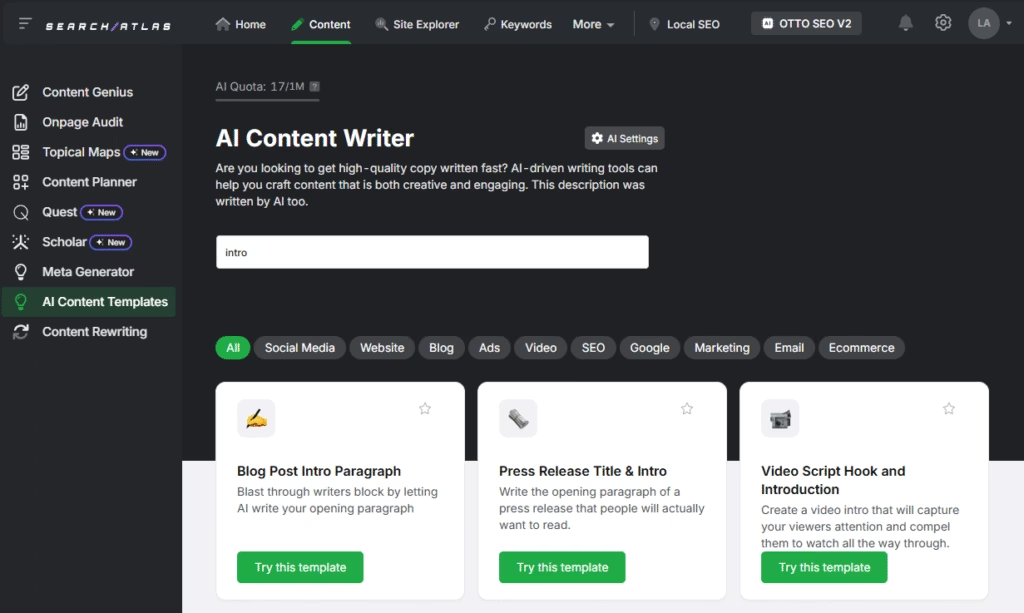
Using AI to Create Content
Relying too heavily on basic AI-generated content can hurt search rankings, just as keyword over-optimization does.
However, when used strategically, an AI SEO writer, especially those designed for specific niches or powered by sophisticated large language models (LLMs), can enhance content creation by:
- Generating Drafts Efficiently: Quickly producing article outlines, sections, or full drafts to serve as a foundation.
- Refining Tone and Style: Customizing language, tone, and accuracy to align with your brand and audience.
- Enhancing Content Iteratively: Continuously improving AI-generated text to ensure quality, coherence, and SEO effectiveness.
6. Track Performance to Refine Your SEO Strategy
SEO success isn’t just about applying the right optimizations; it also requires ongoing monitoring to ensure they are delivering real results.
Without tracking key metrics, you risk making unnecessary changes or missing valuable opportunities for growth. Pay close attention to:
- High Click-Through Rates (CTR): Indicate that your titles and meta descriptions are compelling and attracting users.
- Low Bounce Rates: Suggest that visitors are finding relevant content and staying on your site.
- Longer Time on Page: Means users are engaging with your material, signaling content quality and relevance.
Search engine algorithms constantly evolve, so ranking fluctuations are inevitable. Anticipate and adapt to these shifts rather than reacting to sudden drops.
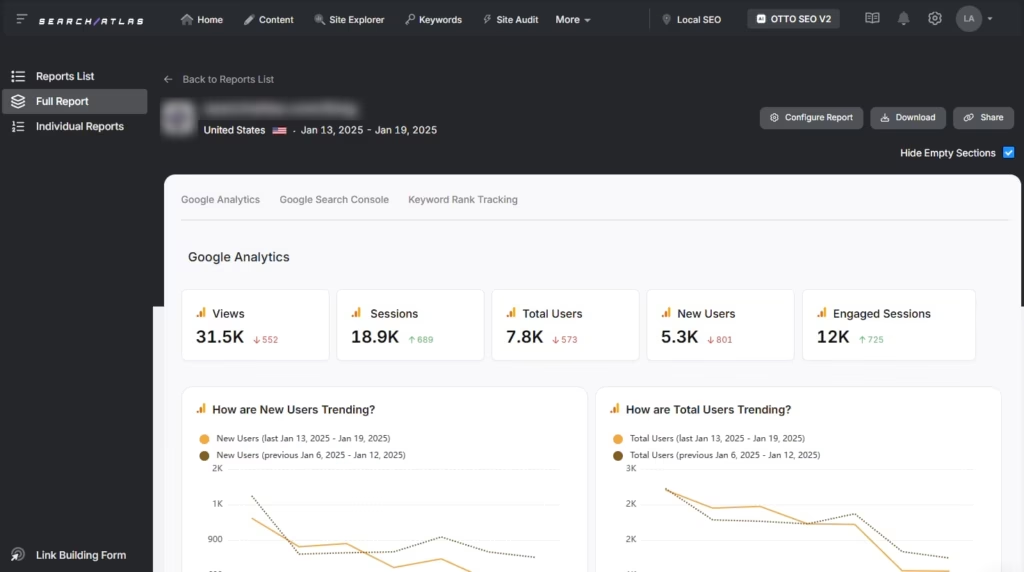
However, this doesn’t mean making constant changes. Instead, focus on identifying patterns and insights that drive meaningful improvements. Ask yourself:
- Which pages generate the most traffic?
- What keywords lead to conversions?
- Where are your strongest backlinks coming from?
- What content formats perform best?
If you don’t want to get overwhelmed by the analysis process, use ranking tracking tools to access metrics like organic clicks, impressions, keyword performance, and more.
This allows you to make data-driven decisions, drive sustainable growth, and maintain a strong search presence.
The Permanent Solution to Over-Optimization
Search engines are constantly evolving, favoring content that provides real value rather than content packed with artificial tricks. 🔍
It’s easy to accidentally over-optimize your website, so you need a strategy that finds the perfect balance between optimization and authenticity.
Don’t let over-optimization hold your site back—go with Search Atlas!
It offers a fantastic suite of SEO tools designed to boost your site without crossing the over-optimization line, so you can achieve maximum visibility and maintain that all-important search engine trust.
From smart keyword research to deep-dive technical audits and supercharging your content, it’s all powered by advanced intelligence and cutting-edge AI!
With real-time updates and continuous improvements, this platform ensures your strategy is always aligned with the latest best practices.
And for the automation of all processes, we have OTTO SEO to keep your strategy precise, adaptable, and safely away from the risks of over-optimization. 🤖
We’re so confident you’ll love it, we’re offering a completely risk-free trial. Try it for FREE today!









